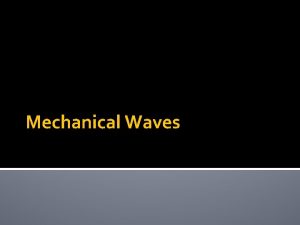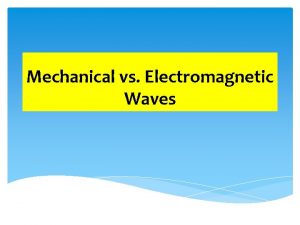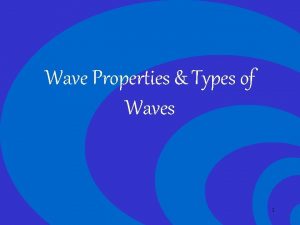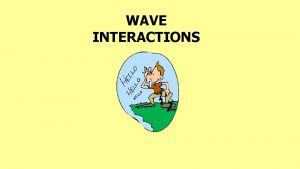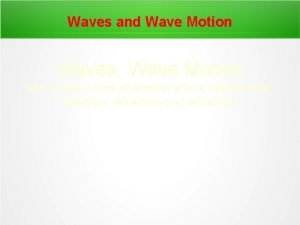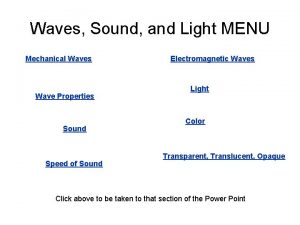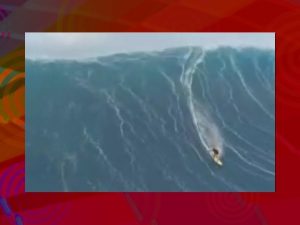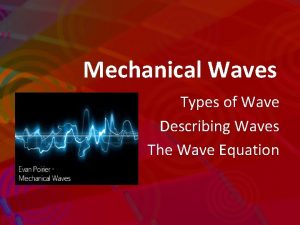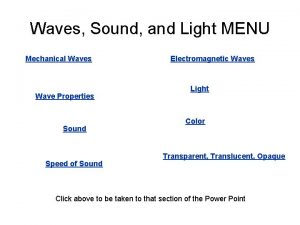Mechanical Waves Mechanical Waves A mechanical wave is
















- Slides: 16

Mechanical Waves

Mechanical Waves A mechanical wave is created when a source of energy causes a vibration to travel through a medium (water, air, soil, etc. )

Parts of a Wave Crest: The highest point of a wave Trough: The lowest point of a wave Wavelength: The distance between two crests

Types of waves There are three types of mechanical waves Transverse Waves Longitudinal Waves Surface Waves

Transverse Waves A transverse wave is a wave the causes the medium to vibrate at right angles to the direction that the wave travels

Longitudinal Waves A longitudinal wave is a wave in which the vibration of the medium is parallel to the direction the wave travels A longitudinal wave utilizes compression and rarefaction


Surface Waves A surface wave is a wave that travels along a surface separating two types of media Example: A wave that travels between land sea

Properties of Mechanical Waves Any motion that repeats at regular intervals is called periodic motion The time required for a complete cycle of a wave is called a period


Properties of Mechanical Waves Any periodic motion has what is called a frequency. This is the amount of cycles within a given time. Frequency is measured in Hertz (Hz)

Properties cont. The wavelength is the distance between one point on a wave to another

Properties cont. Increasing the frequency of a wave decreases its wavelength

Wave Speed To calculate the speed of waves you take the wavelength and multiply it by the frequency Wave Speed = Frequency x Wavelength

Amplitude of a wave is the maximum displacement from the resting point The more energy a wave has, the greater its amplitude

Amplitude
 Mechanical and electromagnetic waves
Mechanical and electromagnetic waves Example of mechanical wave
Example of mechanical wave Low amplitude wave
Low amplitude wave Mechanical waves and electromagnetic waves similarities
Mechanical waves and electromagnetic waves similarities Difference between electromagnetic waves and sound waves
Difference between electromagnetic waves and sound waves Seismic waves are mechanical waves
Seismic waves are mechanical waves Mechanical waves and electromagnetic waves similarities
Mechanical waves and electromagnetic waves similarities Light and sound travel in waves true or false
Light and sound travel in waves true or false Mechanical vs electromagnetic waves
Mechanical vs electromagnetic waves Peak output voltage
Peak output voltage Wave symmetry
Wave symmetry Difference between full wave and half wave rectifier
Difference between full wave and half wave rectifier Rectified sine wave fourier series
Rectified sine wave fourier series Earthquake p-wave and s-wave travel time graph
Earthquake p-wave and s-wave travel time graph Velocity frequency wavelength triangle
Velocity frequency wavelength triangle Difference between transverse wave and longitudinal wave
Difference between transverse wave and longitudinal wave What is a repeating disturbance
What is a repeating disturbance

















